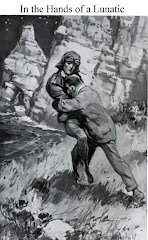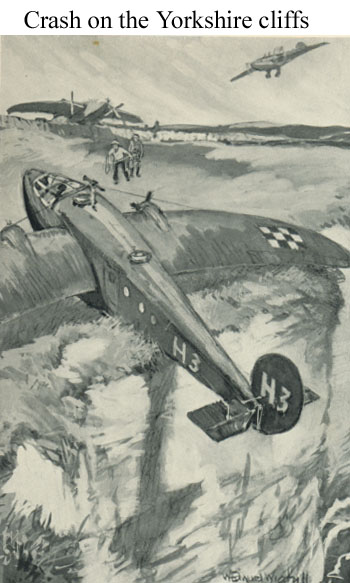A series of events also continue in the background of the main drive of this narrative. These are connected with the activities of the Dorset smugglers. Aubrey finds himself involved in encounters with these men – depicted as wild, ruthless and completely outside any normal lawful authority. With those honest men (or boys) who cross them they are implacable. Once the villains are in the hands of the upholders of justice they are given short shrift.
Aubrey soon realises that he must never fall into their hands. Life, it seems, is full of peril for the young man. He will be safer at sea fighting the King’s enemies on board ship.
He finally gets his chance on the vessel Gannet which has an interesting voyage to many different parts of the world. In the Caribbean he encounters the buccaneers and pirates. In the Mediterranean his vessel has to tackle the Barbary pirates. All the while Aubrey begins to develop the friendships that will stay with him for the rest of his life.
The Gannet’s return to England culminates in a tremendous shipwreck and a renewed encounter with the smugglers.
Aubrey’s later career involves him in tremendous sea fights with the Dutch vessels who are successfully attacking the English coast. In the end he is actually captured and taken into captivity in Holland. Here, in prison, he meets again the man who killed his father. He starts to plan a way that he can outwit his enemy and take possession of the treasure that was left to him by his father. Aubrey’s attempts at escape end in farcical failures and, it is only after peace has been declared that he can return home to England and to Portsmouth.
Westerman uses the last section of the book to wrap up the various strands that he has been weaving from the beginning. To achieve his fortune the young man (who finally comes of age) must travel from Hampshire to the wilds of Yorkshire. Westerman manages to cram in an encounter with a witch in the process of being drowned before Aubrey and his close friends escape on their road northwards. Holwick proves to be the place where he must go and frustrate the schemes of his hated rival. This appears to be a settlement to the south of York and some events (including a remarkable coincidence) take place in that city, involving a visit to Clifford’s Tower.
The rival is drowned, the treasure is retrieved and all ends happily for the hero and his friends. The process by which the chest is made available is both fascinating and fantastic. Rivers being diverted and huge hidden chambers being found are treated as almost commonplace but are still gripping to read about.
Aubrey lives on to the days of Good Queen Anne but somehow fails to mention any part he played in the events surrounding the advent of William of Orange or the departure of James II.
Monday, 30 March 2009
A Lad of Grit - Percy F.Westerman
Certain things become clear about the attitude Percy F.Westerman had to the subject of his first story.
'A Lad of Grit' is subtitled 'A Story of Adventure on Land and Sea in Restoration Times'. There is no doubt where Westerman expected his readers to stand with regard to Roundheads and Cavaliers and the events that involved Great Britain in a civil war and its aftermath. He is a Cavalier by inclination and by open declaration. His opinions about Oliver Cromwell as a form of arch-traitor and his supporters as unworthy of any sympathetic appraisal show which side of the line he was standing as he addressed his younger readers. The loathsome behaviour of the Stuarts (Charles I,Charles II,James II) is glossed over and the romantic notion of Charles I being a martyr without any faults is (for this reader) as grotesque as his superficial and vicious portrait of any who fought for the Parliamentary Cause. However, one doesn't read Westerman for balanced, objective or even honest political opinions. Westerman was merely following a literary path that had been well-trodden by other practitioners of historical stories for juveniles. One only needs to read someone like Conan Doyle to see how a broader and less strait-jacketed approach to national and international figures was possible. That is not what Percy F. Westerman was about.
This is the story of a young man growing to adult years and taking his place in the world. That would seem to be the essence of Westerman's stories for the rest of his life. The section of the book which is devoted to life at sea is filled with tremendous energy and apparent nautical knowledge. The early chapters of the book are set in rural Hampshire with events on Rake Hill and in the small town of Petersfield. The death of Owen Wentworth takes his fourteen year old son, Aubrey, to Portsmouth and lodgings with his aunt and uncle. The story is told in the first person which automatically brings the hero closer to his young readers - yet, from my knowledge, was not the point of view which Percy Westerman used for the majority of his books. (A point to be studied further !) (to be continued later)
'A Lad of Grit' is subtitled 'A Story of Adventure on Land and Sea in Restoration Times'. There is no doubt where Westerman expected his readers to stand with regard to Roundheads and Cavaliers and the events that involved Great Britain in a civil war and its aftermath. He is a Cavalier by inclination and by open declaration. His opinions about Oliver Cromwell as a form of arch-traitor and his supporters as unworthy of any sympathetic appraisal show which side of the line he was standing as he addressed his younger readers. The loathsome behaviour of the Stuarts (Charles I,Charles II,James II) is glossed over and the romantic notion of Charles I being a martyr without any faults is (for this reader) as grotesque as his superficial and vicious portrait of any who fought for the Parliamentary Cause. However, one doesn't read Westerman for balanced, objective or even honest political opinions. Westerman was merely following a literary path that had been well-trodden by other practitioners of historical stories for juveniles. One only needs to read someone like Conan Doyle to see how a broader and less strait-jacketed approach to national and international figures was possible. That is not what Percy F. Westerman was about.
This is the story of a young man growing to adult years and taking his place in the world. That would seem to be the essence of Westerman's stories for the rest of his life. The section of the book which is devoted to life at sea is filled with tremendous energy and apparent nautical knowledge. The early chapters of the book are set in rural Hampshire with events on Rake Hill and in the small town of Petersfield. The death of Owen Wentworth takes his fourteen year old son, Aubrey, to Portsmouth and lodgings with his aunt and uncle. The story is told in the first person which automatically brings the hero closer to his young readers - yet, from my knowledge, was not the point of view which Percy Westerman used for the majority of his books. (A point to be studied further !) (to be continued later)
Sunday, 29 March 2009
Second Book by Westerman
It is actually the first book by Westerman which was called "A Lad of Grit". This is the one that won the bet that he made with his wife. I have started a re-read but it is tough going.
Saturday, 28 March 2009
First book of new blog
I decided to take a look at 'The Mystery of Stockmere School' by Percy F. Westerman and note any content or references that were connected with the North of England. From first glance it seems as though it is connected with Yorkshire, though this is nowhere stated in any explicit fashion. Yet there is a connection with other Westerman stories and his home base by having the sports competition called the "Redcliffe Cup". Sinclair is picked up as a name elsewhere in his stories and the name Desmond appears for more than one of his characters in another book. I will look at the nature of this book on the next occasion.
Subscribe to:
Comments (Atom)



















